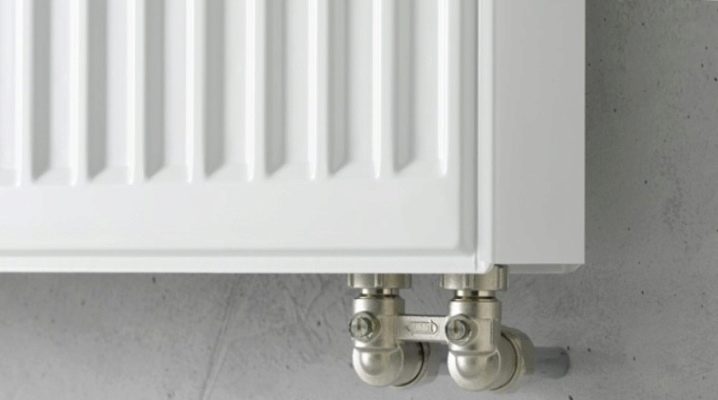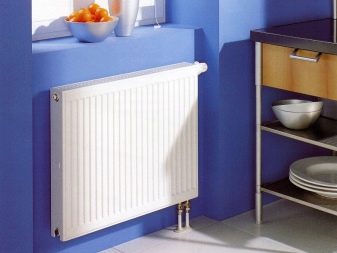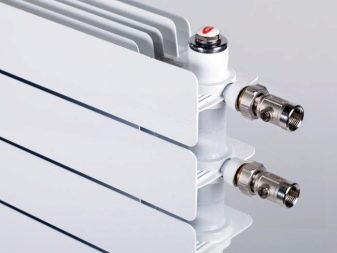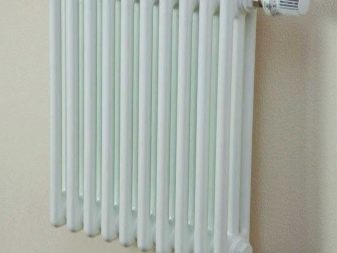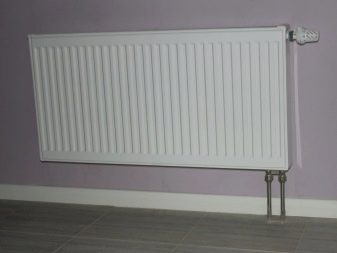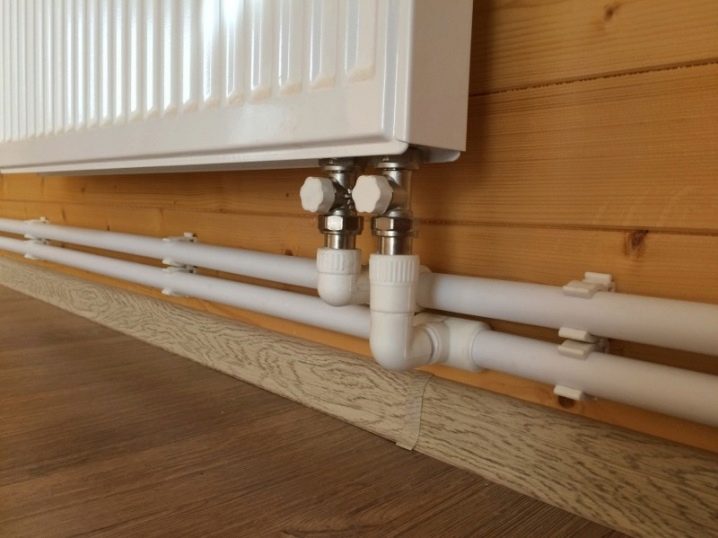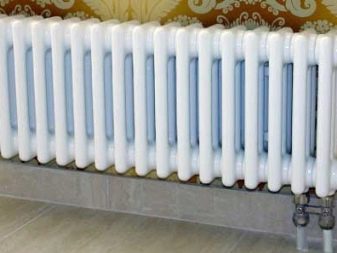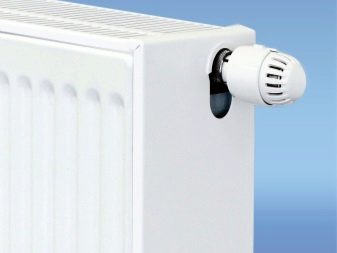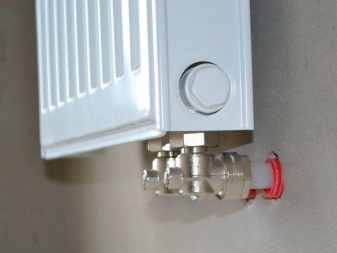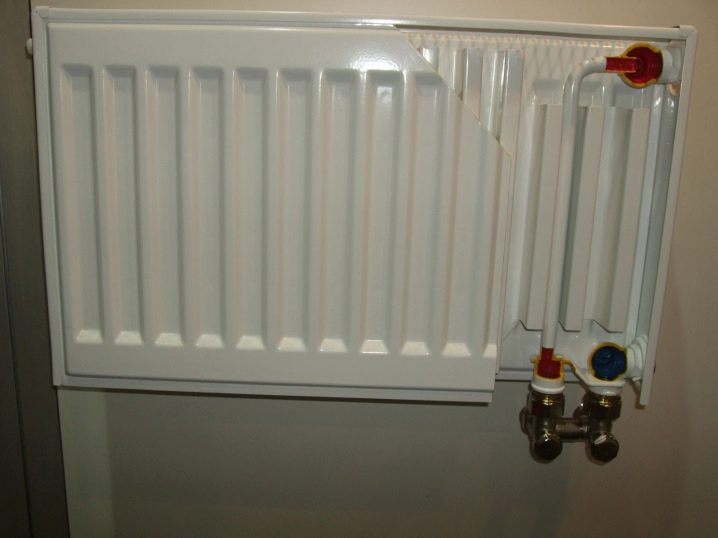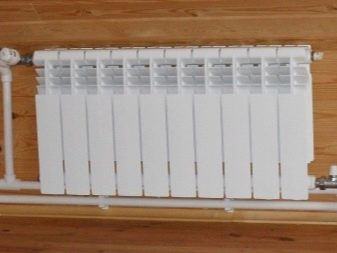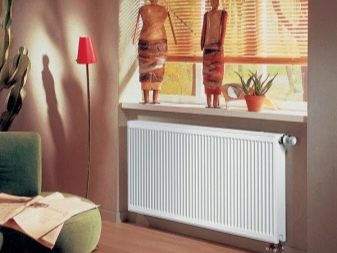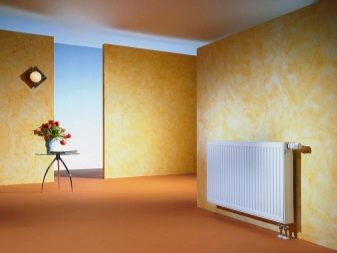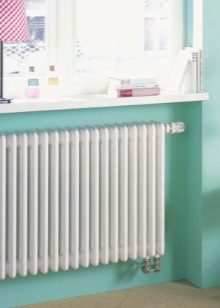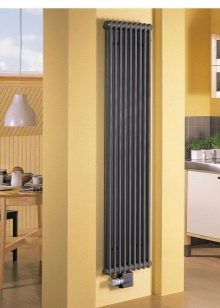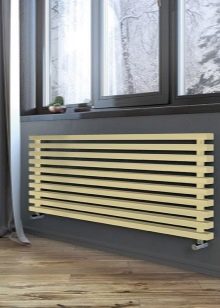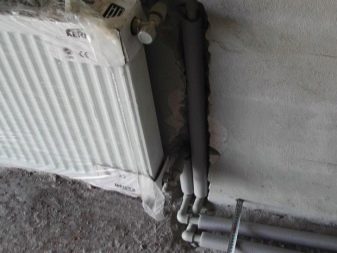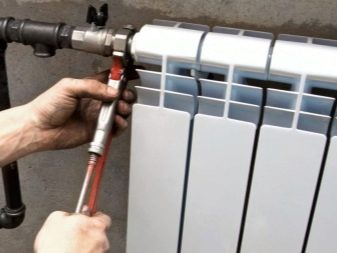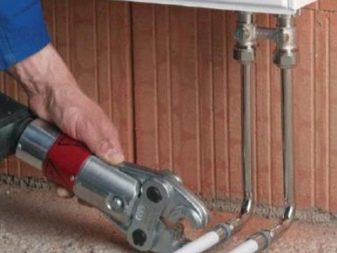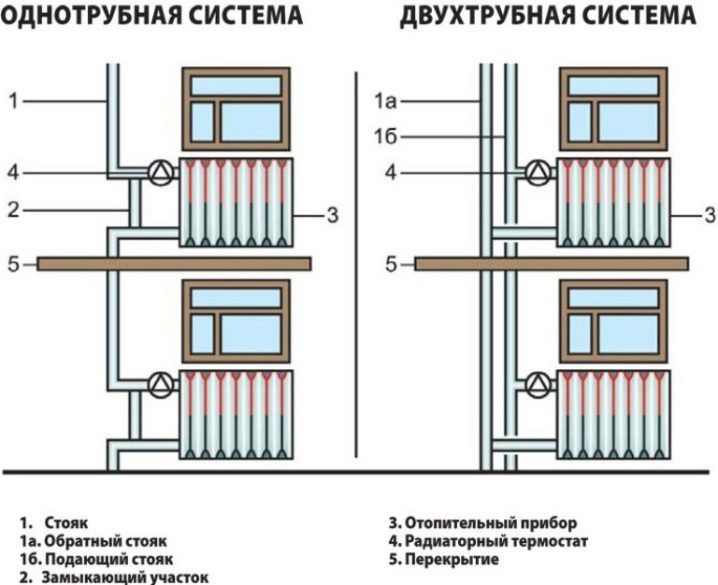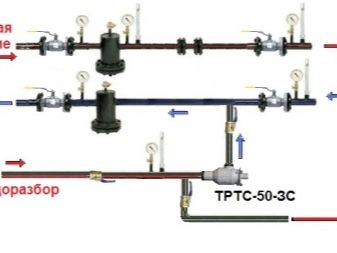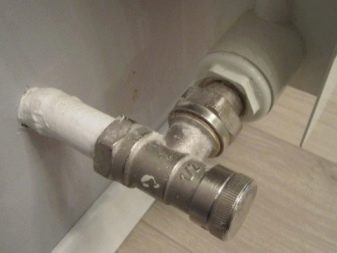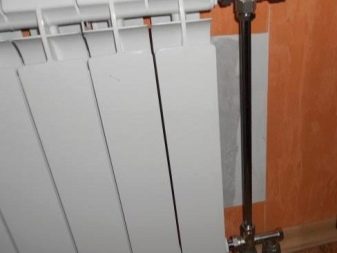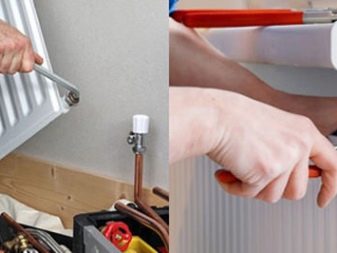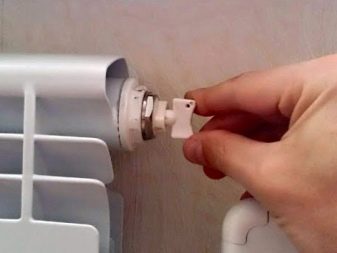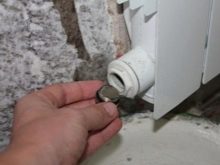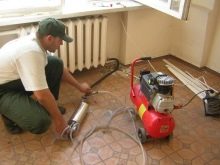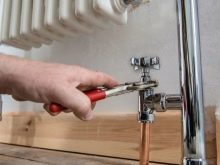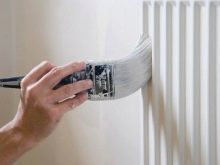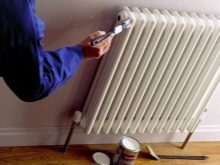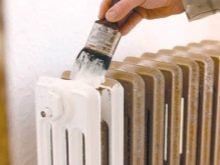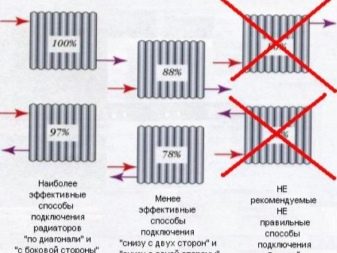Radiators with bottom connection: the advantages of the design and subtlety of installation
Home comfort is made up of many factors, one of which is heating. In the apartments, the central heating system is often represented as a standard diagonal connection, when hot water is supplied through the upper branch pipe, and output - through the lower one. In private homes, a large number of pipes interfere, so it is advisable to install radiators with a bottom connection. Read about their advantages and installation methods in this article.
Special features
The design of sectional radiators with a bottom connection is designed in such a way as to hide the heating pipes inside the case. Recently, they have enjoyed particular success, as they optimally fit into the interior and are distinguished by a high level of functionality.Of course, the cost of most products is quite high, but their operational properties fully justify such costs.
The modern market is filled with all sorts of radiator designs: single, angular, low, high, narrow, made of aluminum, cast iron or from an alloy of two metals.
However, there are only two types of structures with bottom connection:
- steel;
- panel.
Most often it is possible to meet steel radiators - they were fallen in love for simplicity of installation and the compact sizes. Panel, made of aluminum alloys, are characterized by the presence of thermostatic fittings with connections. Heating a room in which a radiator is installed depends on the number of sections of the device. For small rooms, 3-6 panels will be enough. And for spacious rooms such a small amount - the temperature in the room will be low.
If we talk about ease of installation, then the steel devices are superior to panel ones, since they must be installed in any position, and the hot water will flow directly to the last section. This method of submission greatly simplifies the procedure of replacing the section, if necessary.In addition, the installation can be done in any way, unlike new radiators, which can not always be installed on outdated heating systems. Structures of profiled steel are distinguished by a long service life and high level of heat transfer.
It is important to remember that regardless of the connection method, there are rules for installation, following which you can avoid problems in operating the device:
- the distance from the radiator to the wall should be 5 cm;
- the distance to the floor is 10 cm, in some cases a distance of 5 cm is allowed.
Advantages and disadvantages
Modern radiators of the lower connection have many advantages:
- the installation of batteries of this type allows you to achieve a laconic interior without any technical elements;
- the original design involves the installation of the adapter direction of the device;
- pipe connections immediately go to the floor or wall;
- almost all modern radiators come complete with built-in thermostat.
Like any other device, these new-fangled devices are not without flaws.
- For a beautiful aesthetic appearance of the pipe, as a rule, mounted on the floor or hidden under the plinth. In the event of an accident, it will be difficult to notice the fault immediately.Problem solving can also be difficult. Repair of pipes cannot be performed without dismantling the floor covering, as a result, it is necessary to eliminate not only the malfunction of the pipe, but also the defects of the floor.
- Most experts believe that the lower connection loses in terms of heat transfer compared to side-connection batteries. It happens that with the lower connection, multisection radiators are heated by parts. Of course, this problem can be solved, but it is best to use these devices in private homes.
- Each section of the battery must be equipped with a separate air vent.
- Radiators with bottom connection are strictly prohibited to use for self-flowing heating system.
- To work effectively, you will need to install an additional circulation pump.
There are several ways to connect the radiator:
- side;
- diagonal;
- cross;
- lower.
If the exit of pipes is implied only on one side, then this is a one-way connection. Hot water is supplied through the upper part of the battery, at the bottom of which there is a stopper for draining cold water.
With a versatile connection, hot water comes from one edge, and cold is discharged from the other side of the structure. This is ideal for homes with individual heating. Its advantages include the universality of water supply to the radiator: from top to bottom, from bottom to top, and even from bottom to bottom. It should be noted that the length of the pipes for the supply and outflow of water in this case is much less.
Species
All heaters with the possibility of lower installation are divided into three types.
Bimetallic
The design of the device is characterized by the presence of convection plates. Equipment connections are located at four points. The simplicity and versatility of operation makes them a bestseller. The heat loss rate does not exceed 15%. In the case of a decrease in heating power, you can adjust the thermostat manually.
In the production of bimetallic radiators use high-strength metals: steel and aluminum. Steel is in good contact with the coolant, and aluminum is needed as a heat-conducting element.
Radiators of this type are monolithic or collapsible. Application of the first is considered rational when working with high pressure.Such designs are more reliable, which means that the risk of an accident is minimized.
Panel
There are smooth or grooved. Their design implies a lower connection to the heating system without a diagonal or top connection. The only negative - connecting elements for connection are purchased separately.
Tubular steel
They are considered to be very effective in use, as they have high heat transfer rates. The highest quality products are recognized German and Italian production, in which there is the possibility of unilateral summarizing.
Recommendations for assembly and installation
The ease of operation of radiators depends largely on the correctness of their installation. Consider the main aspects of the installation of these products.
When choosing a place to install the structure, make sure that between the structure, the floor and the wall there is a necessary place (7-10 cm). In addition, the free space around the battery will ensure proper air circulation in the room. But also in the free access should be the places where the battery is connected to the bottom connection. Particular attention should be paid to the correct distribution of the heat flow of the product,so that the whole room is heated, not the space above it.
The location of fastener points also depends on the choice of installation location. Starting installation, the battery, regardless of its type, is left in the packaging from the manufacturer. This will minimize the possibility of scratching the device. Subsequently, the film is easily removed without leaving marks.
After the place of installation is chosen, proceed to the development of the connection scheme. Many are not serious about this stage of the installation. However, an improperly crafted circuit can adversely affect battery performance.
There are only two types of pipe wiring: one-pipe and two-pipe. Bottom connection is possible in both cases. The main task is to choose a method so that the heating of the room temperature is optimal for living.
The heat carrier with the lower connection is equipped with a thermostat, due to which the heating level of the room temperature is adjusted. It is worth noting that this is not an expensive device - the cost of the battery will increase by about 10%.
Remember that in any case installation, dismantling or repair of the structure should be carried out by a specialist.Otherwise there is a risk of unforeseen breakdowns and emergencies.
One of the important steps in connecting a radiator is to connect the structure with supply and exhaust pipes. It is better to mark the supply and discharge pipe - in the future it will facilitate the repair of the structure.
With the lower connection of heat transfer by itself is considered ineffective. Therefore, improper connection may lead to a decrease in the productivity of the device.
Connection steps:
- the radiator is installed on the stand, align and determine the location of fasteners according to the number of sections;
- Usually radiators come complete with brackets, so the next step is to install the bracket into the prepared holes;
- after installation of the device, the upper outlets are closed with a Mayevsky crane and a locking cap, while for a more tight joint, sanitary flax is used, winding it clockwise for the right thread, in the opposite direction for the left one;
- screw the ball valves and bring the pipes.
Useful tips
For durable operation, it is not enough to properly connect the device. Providing competent care, you can significantly extend the life of the radiator.
At the end of the heating season, the water from the central heating is drained for the entire summer period. It is necessary for the prevention and repair of pipes. However, this process cannot be called useful for radiators - most devices undergo internal corrosion during this period.
Creating favorable conditions for the summer period is quite simple.
For this you need to hold the following activities:
- after the radiators completely cool down, shut off all the valves on the direct and reverse water connections;
- after that it is necessary to open all air vent.
Thus, the remaining water in the radiator will be vented into the air vent due to thermal expansion, which occurs due to the chemical reaction of the metal with water.
At the beginning of the heating season, it is necessary to close the air vent before filling the batteries with hot water. Do not forget to wash the radiators at least once every two years.
This happens as follows:
- the lower and upper gates are closed;
- open air vent;
- drain water through the plug or the drain valve;
- unscrew the detachable mounts;
- remove the radiator from the bracket;
- After all the above manipulations, you can flush the device with water through a hose that is easily put on the water tap.
During washing it is strictly forbidden to use abrasive products.
Do not forget about the external cleaning. Dust, clogged in the fins of the battery, reduces the heat transfer device, so regular washing of the case does not damage the device.
Cast iron radiators need staining. To do this, use a special paint for batteries and heating structures that can withstand high temperatures. Such paints do not turn yellow, do not crack and are not washed off.
It is strictly forbidden to use metallic paints, which reduce the level of heat transfer. The same result leads to the use of screens and porous humidifiers.
What to do if the radiator does not heat?
The reasons for the lack of heat can be several.
- If the last radiator does not heat up, this indicates a weak power of the circulation pump. Tilt angles may have been disturbed during pipeline installation.
- If the lower part is not warming up, this indicates an incorrectly tuned thermostat.
- If the upper part does not heat, or the extreme sections remain cold, it means that an airlock has formed inside the structure.
- If the lower corner of the radiator remains cold - you should look for the cause in the installation. Usually, this indicates a distorted construction.
Choosing high-quality radiators, you can provide your home with warmth and comfort for many years.
The subtleties of mounting a steel panel radiator are described in detail in the video.
